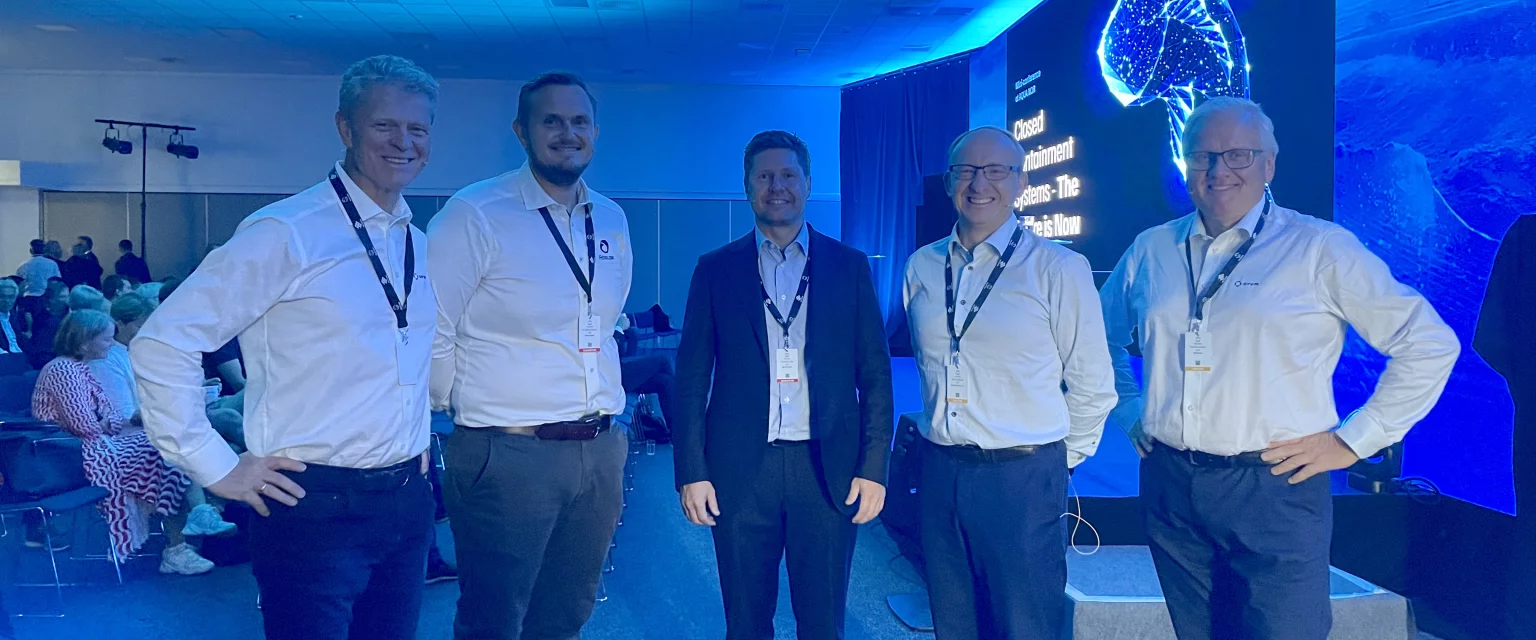During Aqua Nor, we organized a seminar in collaboration with our friends and competitors, FishGlobe and Ovum. The aim was to put Floating Closed Containment on the agenda and share insights and experiences from our three different concepts - Marine Donut, FishGlobe, and Egget.
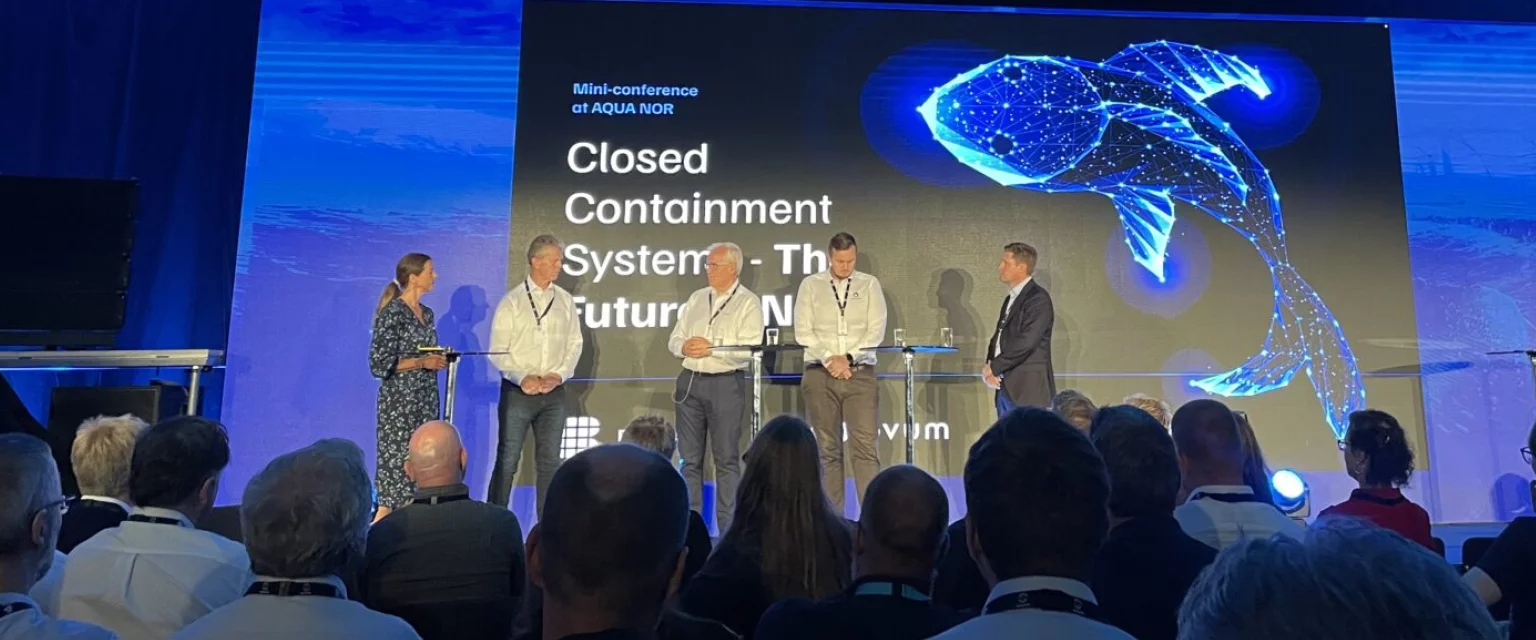
With over 200 decision-makers from the aquaculture industry, supplier industry, research community, and government authorities in the audience, we can confidently say that the event was a success.
The first speaker was Eivind Helland from Blue Planet, who discussed the challenges in the industry:
"The Norwegian coastline is "full." When we consider the requirement of a minimum 5 km distance between locations for biosecurity reasons, there is no space for new locations," says Helland. "Furthermore, we see that the growth rate in the industry is slowing down. From 2006 to 2012, production increased despite a reduction in the number of locations, but now it has plateaued."
Helland pointed out two possible paths to address these challenges:
"The industry can either improve the utilization of existing locations, for example, by producing post-smolt on land or in closed floating facilities, so that the salmon are exposed to the sea for a shorter period overall. Or transition to new technologies such as semi-closed, closed, or submersible facilities."
"Another option is to explore new production areas, such as offshore."
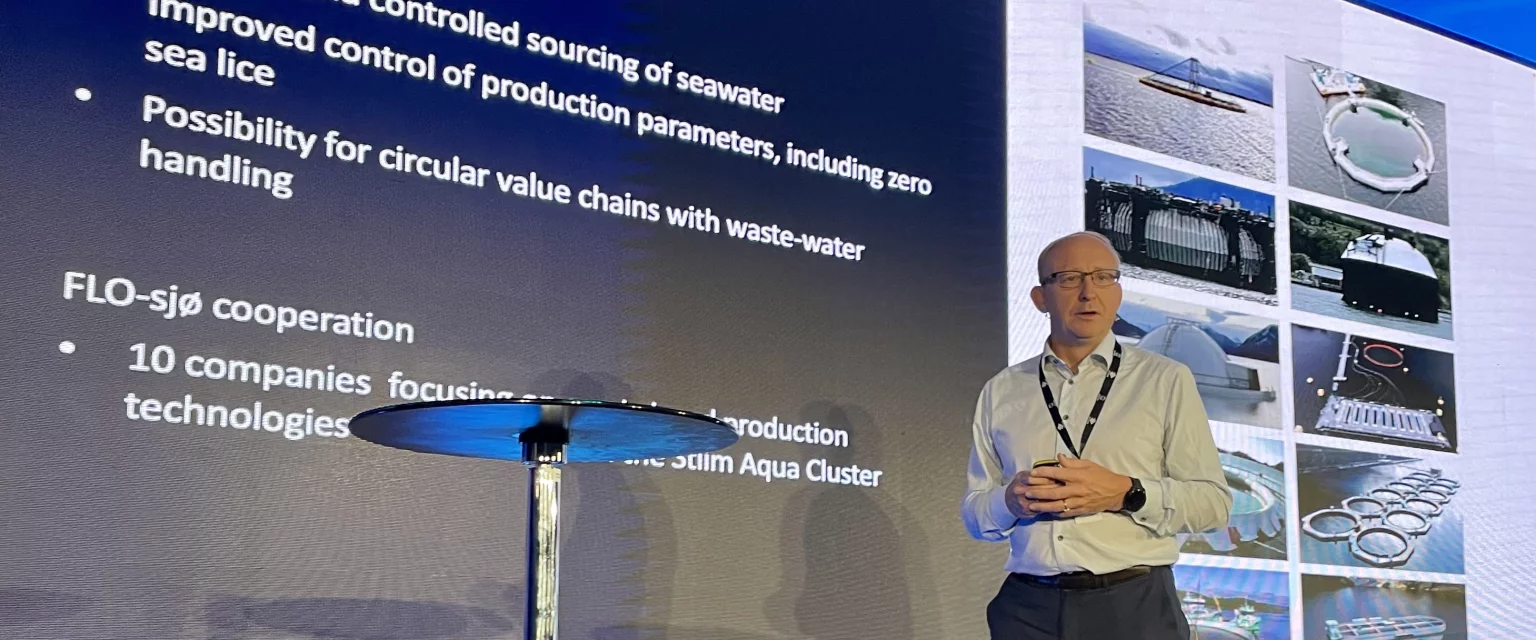
FishGlobe is the concept with the most experience in rearing fish in closed containment systems. The first FishGlobe was put into production in 2019, and the second one was put into use in December 2021.
"We have delivered 12 generations of post-smolt so far, totaling 3 million individuals," says Tor Magne Madsen, COO of FishGlobe. And the experiences are extremely positive:
"We haven't spent a single krone on lice treatment, there have been no escapes, no contact with wild fish or predators, and we haven't released any sludge/pollution. So, there is no doubt that the facility addresses many of the challenges in the aquaculture industry right now."
"We have also seen very good growth rates in the fish. When we have full control over all parameters, it provides optimal growth conditions."
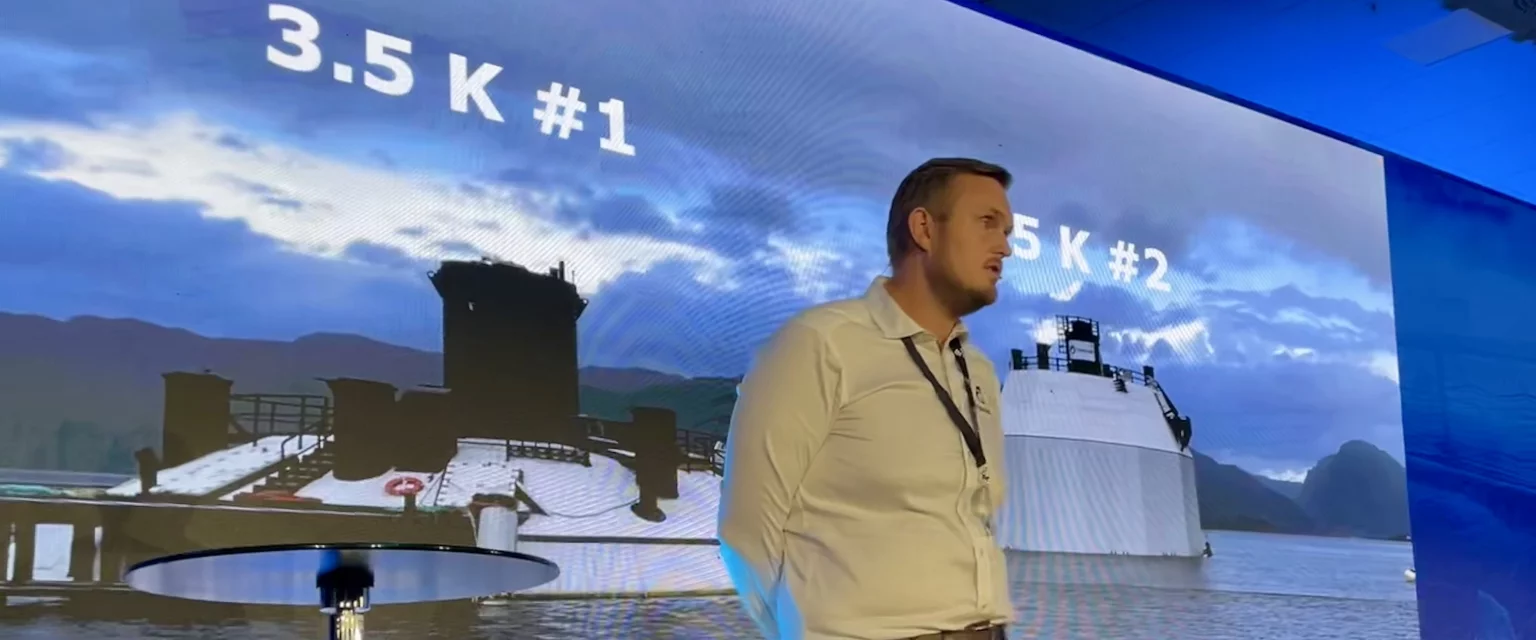
Ovum has had one generation of fish in their Egget facility. Like FishGlobe, the results have been excellent:
"We observed a 20% increase in growth rate, and a remarkable 98.9% survival rate. The feed conversion ratio was 0.85, which results in a significant cost reduction," says Cato Lyngøy, CCO of Ovum. "And, of course, there were no salmon lice, other diseases, or escapes."
Lyngøy further explains that floating closed containment can increase productivity in the industry by up to 50% per location.
"Experiences show that post-smolts raised in floating closed containment are healthier and more robust, and are actually less susceptible to salmon lice when transferred to open pens. They maintain their good growth rate and reach harvest size a whole four months earlier!"
It's not realistic for floating closed containment to replace all open pens worldwide, but it can play a vital role in the value chain:
"We have great faith in a hybrid production model, where a floating closed containment facility is used in combination with open pens," says Trond Severinsen, CCO of Ovum.
"You start with 1 million post-smolt individuals in a floating closed facility. When the fish reach 1 kg, you make a transfer of 200,000 fish to an open pen. The same process is repeated at 1.3 kg, 1.8 kg, and 2.5 kg. This leaves you with 200,000 fish growing to harvest size in the closed facility, while 800,000 grow in open pens. Overall, the exposure to salmon lice, the impact on the external environment, and the risk of escapes are significantly reduced."
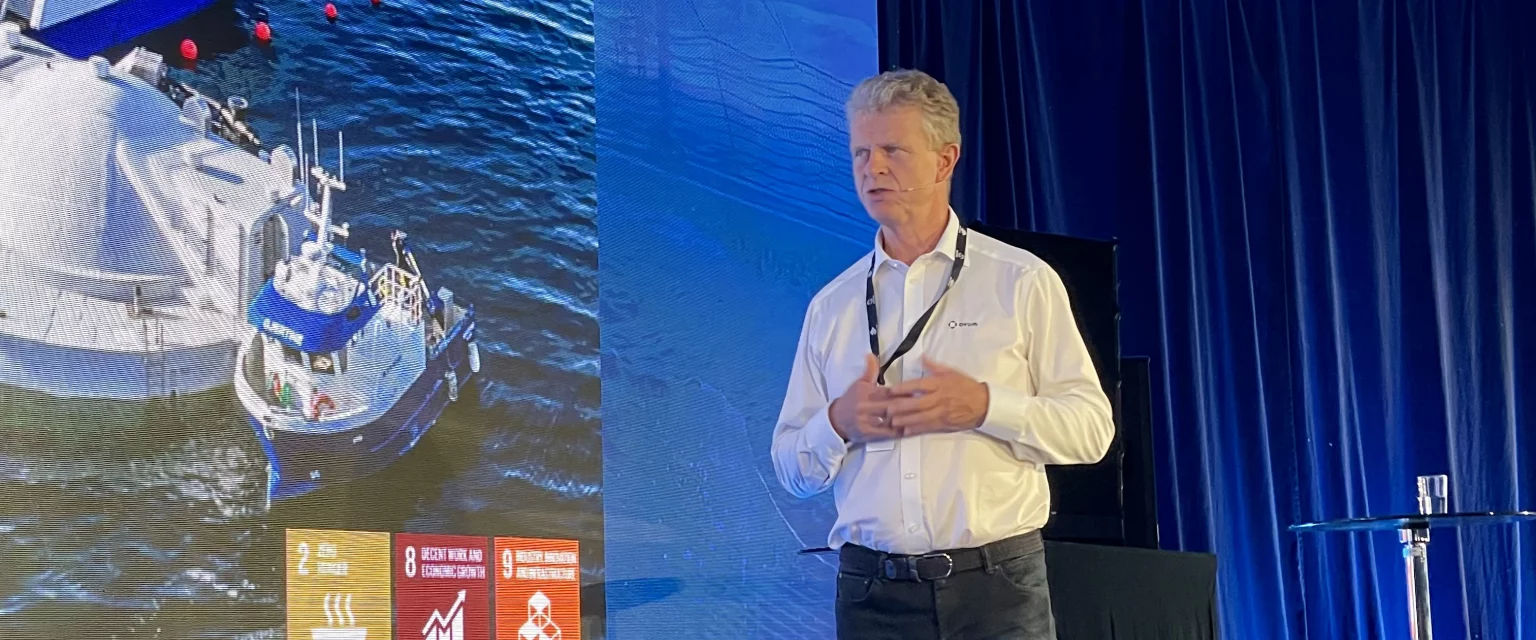
Marine Donut is Bluegreen's concept for floating closed containment. The first facility was completed this summer, with fish intake planned for the fall.
"The facility operates on the same principles as FishGlobe and Egget, so it's highly likely that the results will be similar," says Nils-Johan Tufte, CEO of Bluegreen.
Tufte emphasized that despite the higher CAPEX of floating closed containment compared to open pens, profitability is ultimately better.
"The production costs per kilogram of salmon have increased significantly in recent years. Feed and 'other,' which largely consists of lice treatment, are the biggest cost items at 41% and 24% of OPEX, respectively. A floating closed facility eliminates the need for lice treatment and reduces feed costs."
When you add higher growth rates, lower mortality, and improved logistics, the overall calculation becomes very interesting.
"The industry must accept higher CAPEX in exchange for reduced OPEX and consider profitability from a longer-term perspective."
In the aquaculture industry as well, authorities and regulations lag behind technological advancements. The licensing system was created at a time when open pens were the only option, and in recent years, numerous reports and studies have recommended changes to develop the industry in a more environmentally friendly direction.
"The licensing system must adapt to new technology," says Tufte. "A conversion scheme will encourage the industry to invest in closed solutions while increasing the production of farmed fish. The latter is a stated goal of the Norwegian authorities. An environmental technology permit scheme was open for consultation in the fall of 2021, but then it went silent. We hope it will be put in place soon."

Judging by the interest and signals at Aqua Nor, it seems that floating closed containment is approaching a breakthrough. However, expanding production capacity takes time.
"When the changes in the licensing system are implemented, demand will explode, I'm 100% sure of that," says Madsen. "If I were a fish farmer right now, I would place an order for one of these concepts as soon as possible and secure a spot in the queue."
Would you like to read more about the three concepts for floating closed containment?
